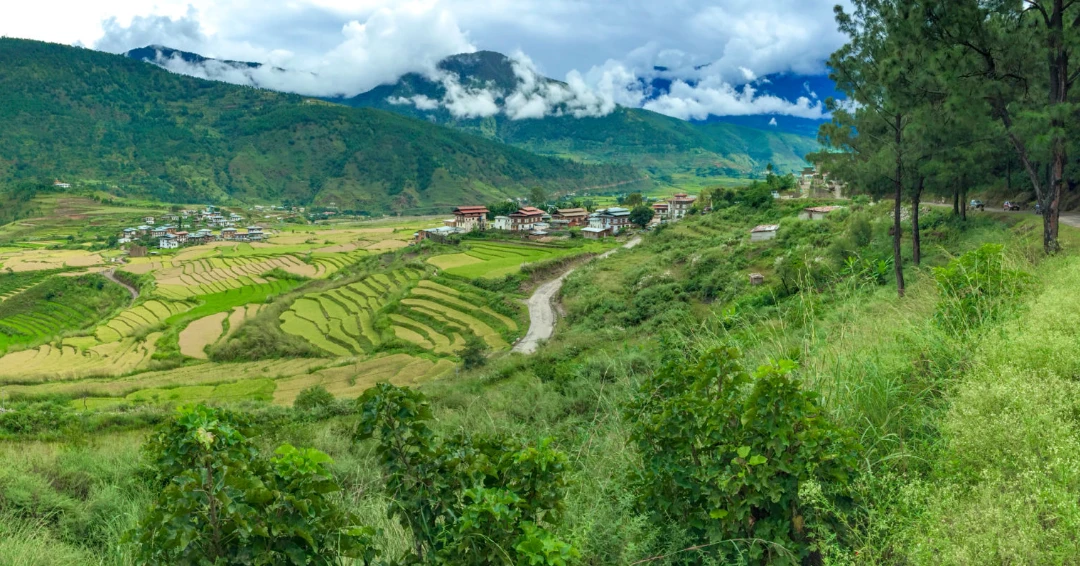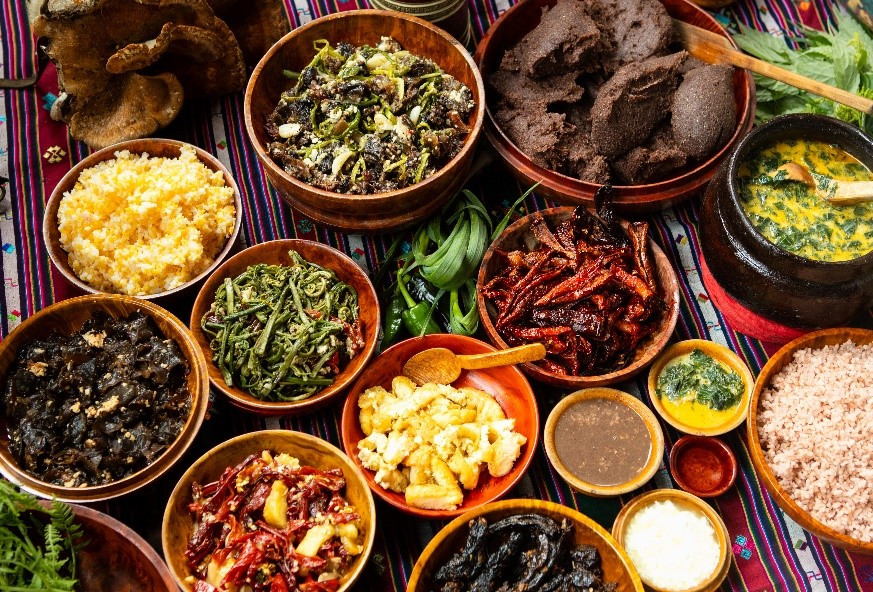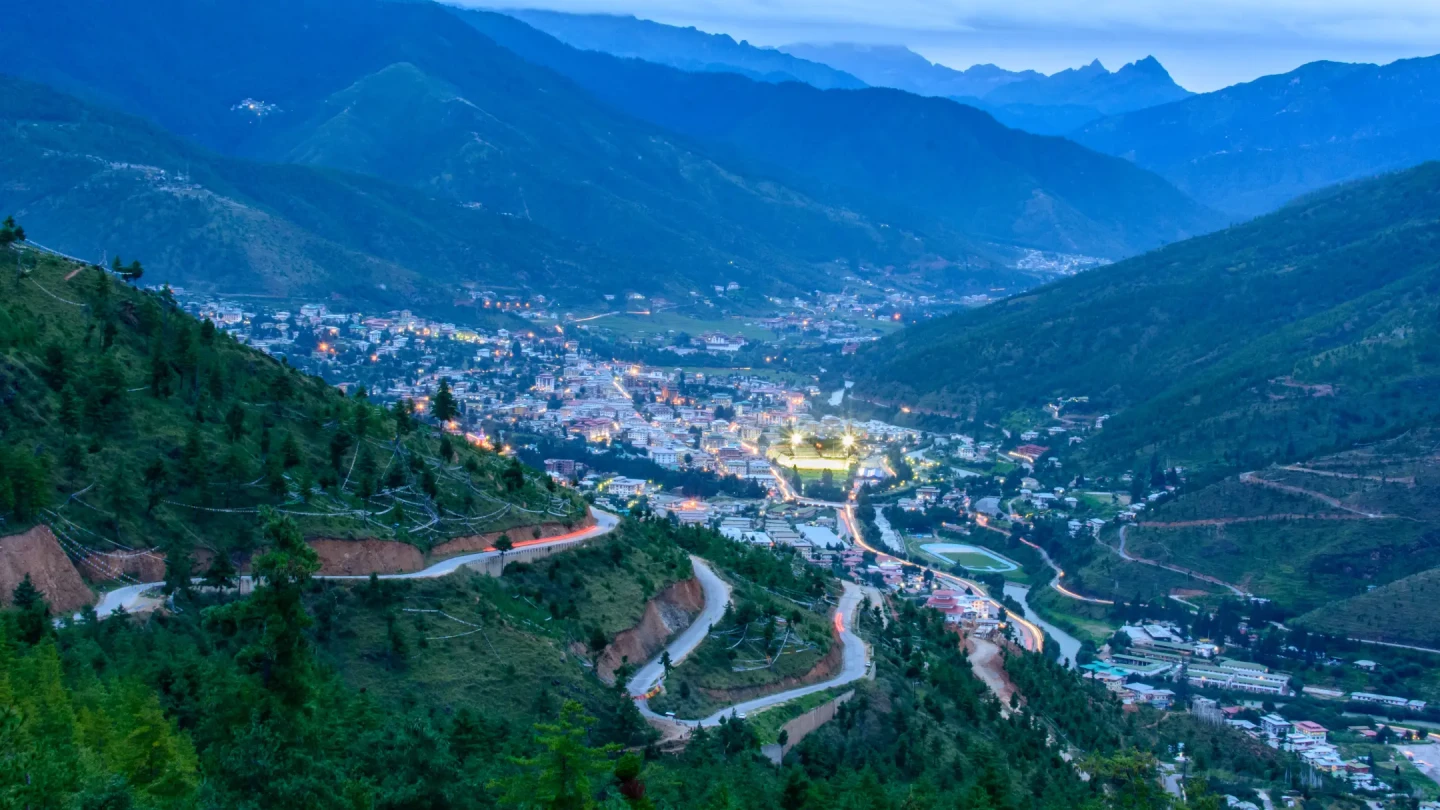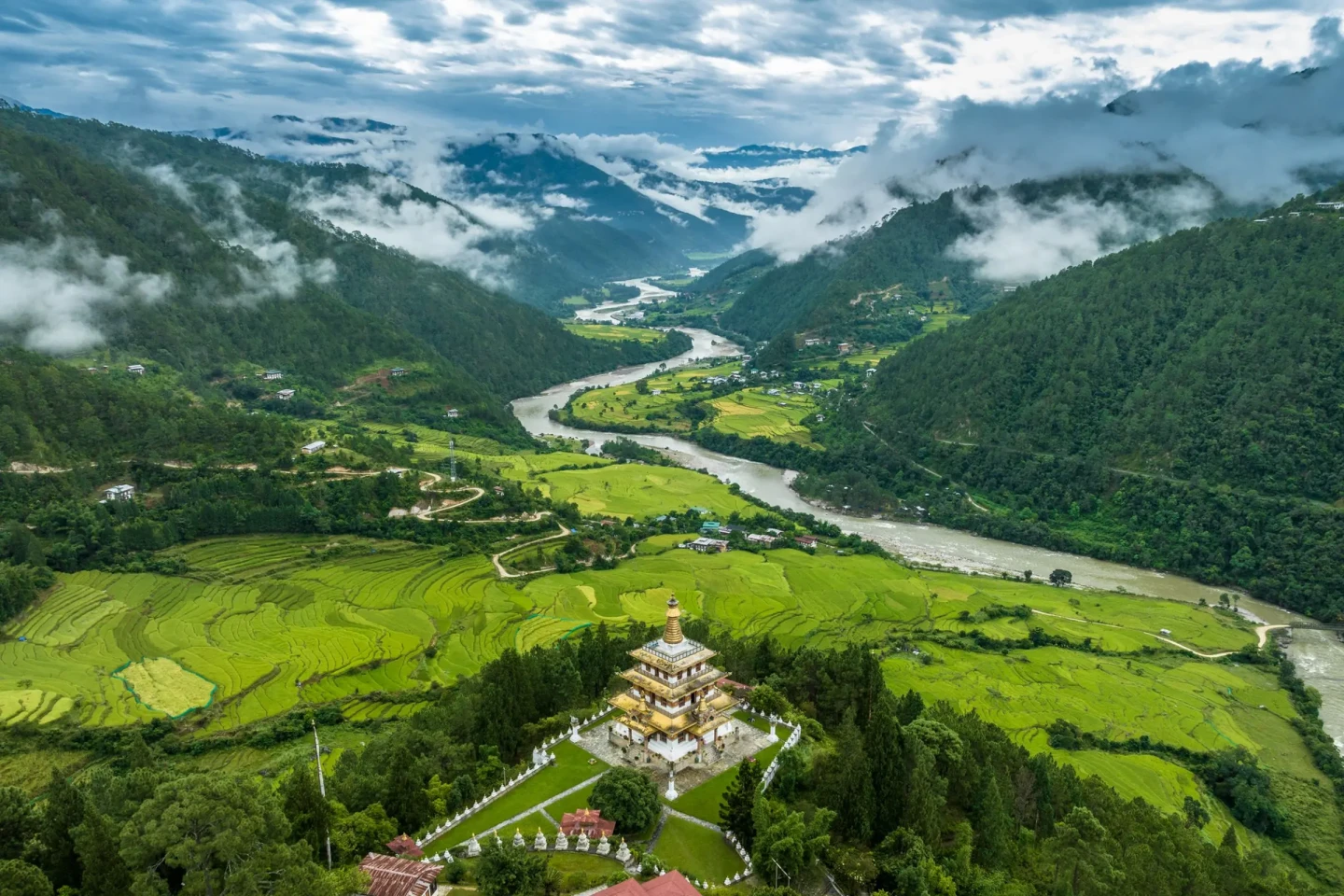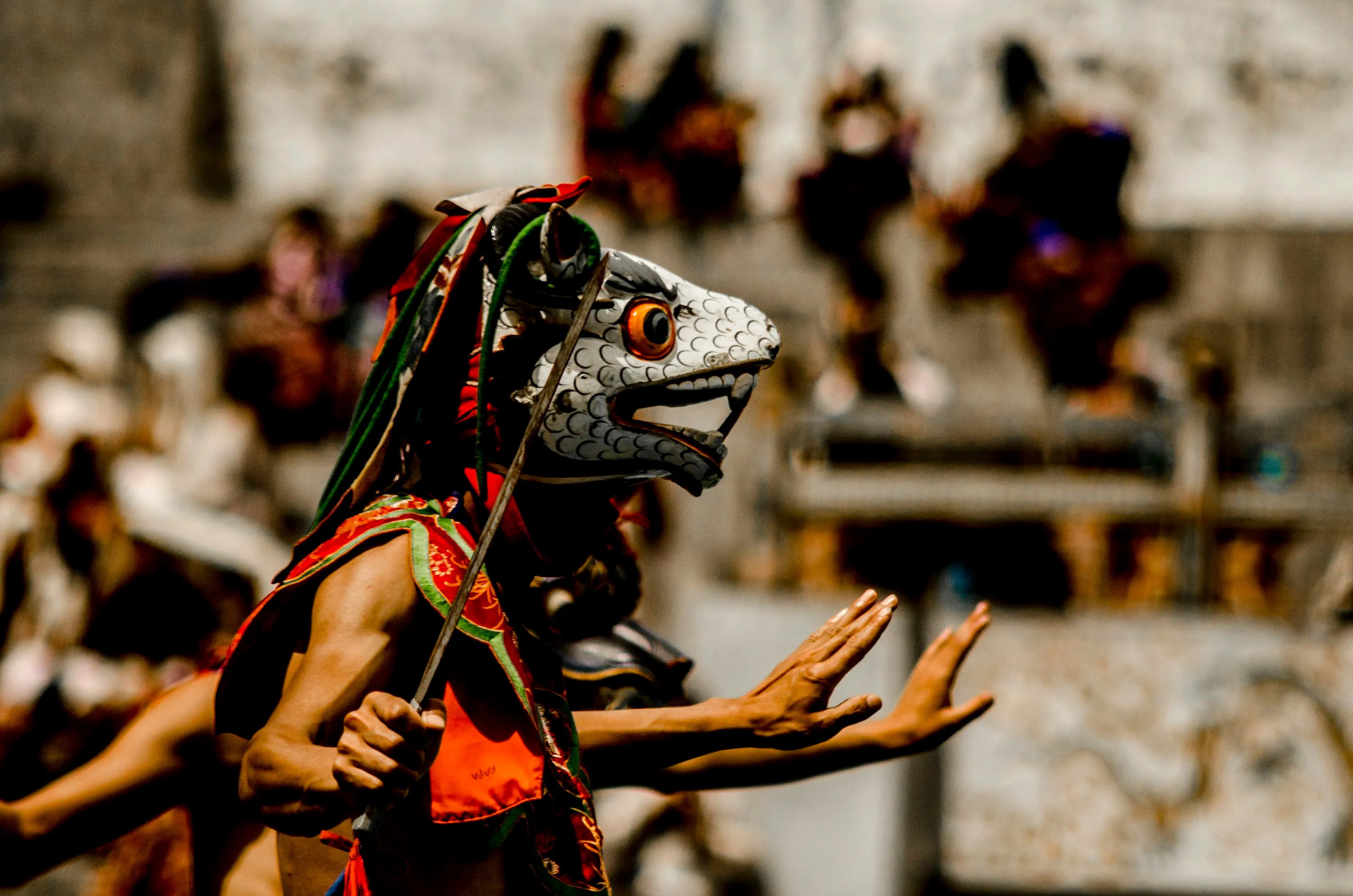The rhythmic chanting grew louder as we rounded the final bend in the trail. Emerging from the pine forest, we were greeted by an explosion of color that seemed almost surreal against the backdrop of the ancient monastery perched on the cliff edge. Hundreds of villagers dressed in their finest traditional garments had gathered in the courtyard, while monks in crimson robes performed sacred dances that have remained unchanged for centuries.
This wasn't Paro Tshechu or Thimphu Domchoe – the famous festivals that appear in every Bhutan guidebook. This was Gasa Tshechu, a celebration rarely experienced by foreign visitors despite its extraordinary cultural richness. I had brought a small group of travelers here as part of my personal mission to explore Bhutan's "hidden festival trail" – the lesser-known celebrations that offer perhaps the most authentic glimpses into the kingdom's living spiritual traditions.
"I've visited Bhutan three times before," whispered Catherine, a retired anthropologist from Boston who was part of our group. "But this... this feels like discovering Bhutan all over again."
Beyond the Tourist Calendar
Most travelers to Bhutan time their visits around major festivals in Paro, Thimphu, or Punakha – and with good reason. These spectacular events showcase the kingdom's cultural heritage on a grand scale. But in 2025, a new trend is emerging among repeat visitors and those seeking deeper cultural immersion: exploring the dozens of smaller, regional festivals that occur throughout the year in remote valleys and villages.
"The famous festivals are magnificent, but they've naturally become more oriented toward accommodating visitors," explained Lama Namgay Rinchen, whom I interviewed at Gasa Monastery. "These smaller tshechus retain a different energy. They're primarily by and for the local communities, maintaining rituals that have spiritual significance rather than spectacle as their primary purpose."
This authenticity is precisely what's drawing a new category of cultural travelers to venture beyond the standard circuit. In response, the Tourism Council of Bhutan recently launched an initiative to document and provide information about these lesser-known festivals, while carefully managing visitor numbers to ensure the events aren't overwhelmed.
"We're creating a balance," explained Karma Lotey, CEO of the one of the travel agency, when I met with him in Thimphu. "We want to distribute tourism benefits to more communities while preserving the integrity of these sacred events. Each festival now has a visitor quota, typically no more than 15-20 foreign guests per day."
The Festival Calendar Reimagined
My journey through Bhutan's hidden festival trail began in January with Nomad's Festival in Bumthang, where the semi-nomadic Brokpa people gather to trade, compete in traditional sports, and perform ancient songs that have been passed down orally for generations.
Dorji Wangchuk, a 72-year-old Brokpa elder, invited me to his tent for butter tea after I expressed interest in his yak-hair garments. "My grandfather taught these songs to my father, who taught them to me," he explained, his weathered face crinkling with pride. "Now tourists come to hear them, and my grandchildren see that our traditions have value. They're less eager to leave for the city."
This preservation of cultural heritage through thoughtful tourism is a theme I encountered repeatedly. In March, I traveled to the remote eastern region of Trashiyangtse for Chorten Kora Festival, where Bhutanese pilgrims are joined by the Dakpa people who cross the border from Arunachal Pradesh in India. The two groups circumambulate a sacred stupa modeled after the famous Boudhanath in Kathmandu.
"This festival celebrates our cross-border cultural connections that predate modern national boundaries," explained Tshering Choden, a local schoolteacher who has documented the festival's history. "When tourists show interest, it reinforces for our young people that these connections matter."
April brought me to Domkhar Festival in Chumey Valley, where masked dancers perform the sacred Zhey dance – a tradition said to date back to the 8th century. Unlike the more formal performances at major tshechus, here the boundary between performers and audience occasionally dissolves, with villagers spontaneously joining certain segments of the dance.
"My favorite moment was when an elderly woman pulled me into the dance circle," recalled Michael, a photographer from Germany who joined our group. "No one told her to include the foreigners – it was a genuine moment of cultural sharing that couldn't have been scripted."
Seasonal Rhythms and Agricultural Celebrations
Not all of Bhutan's hidden festivals are religious in nature. Throughout the summer months, communities across the kingdom celebrate various stages of the agricultural cycle with events that blend practical farming traditions with spiritual observances.
In June, I witnessed the rice-planting festival in Punakha Valley, where farmers sing traditional songs to maintain rhythm as they work together to transplant rice seedlings. The day concludes with communal feasting and rice wine shared among neighbors.
"These agricultural festivals follow the natural rhythm of the seasons," explained Tshewang Dendup, an ethnographer documenting Bhutan's intangible cultural heritage. "They remind us that in Bhutanese culture, the spiritual and practical aspects of life were never separated. Planting rice was both economic necessity and sacred act."
July took me to the remote village of Ura for the Yakchoe Festival, where locals celebrate the arrival of summer with rituals to ensure good harvests and protection from natural disasters. The highlight is the display of a sacred relic believed to have been hidden by Guru Rinpoche, the revered figure who brought Buddhism to Bhutan in the 8th century.
"For centuries, this relic was shown only to villagers," explained the local lama. "Now, a small number of respectful visitors are welcomed. Their interest helps fund the monastery's restoration and our community school."
Practical Considerations for Festival Travelers
For travelers interested in experiencing these lesser-known festivals, advance planning is essential. The visitor quotas mean spaces fill quickly, often months ahead.
"We recommend booking at least six months in advance for the smaller festivals," advised Kinley Wangmo of the Tourism Council. "And travelers should understand that these events follow a different rhythm than what they might be accustomed to. Schedules can change based on astrological calculations or weather conditions."
Accommodation near remote festivals is typically limited to simple guesthouses or homestays rather than luxury hotels. This constraint has actually enhanced the experience for many visitors, providing deeper immersion in local community life.
"I stayed with a family in Ura during Yakchoe," shared Jennifer, an architect from Toronto who traveled with us. "The grandmother of the house dressed me in a kira she had woven herself and taught me the proper way to wear it for the festival. That personal connection became as meaningful as the festival itself."
Respectful Participation
As interest in these hidden festivals grows, the Tourism Council has developed guidelines for respectful participation. Visitors are briefed on appropriate behavior, photography restrictions, and the significance of the events they'll witness.
"We're guests at a religious ceremony, not spectators at a performance," emphasized Dorji Wangchuk, one of Bhutan's most experienced cultural guides. "The most enriching experiences come when travelers approach these festivals with humility and genuine curiosity."
This approach has created a virtuous cycle. Local communities report that respectful tourism has strengthened their commitment to maintaining traditions, while visitors gain insights that go far beyond typical tourist experiences.
"What struck me most was how living these traditions are," reflected Catherine as our group shared reflections after Gasa Tshechu. "These aren't performances preserved for tourists – they're vibrant expressions of a culture that has maintained its essence while thoughtfully engaging with the wider world."
Looking Ahead: The Future of Festival Tourism
As Bhutan continues to refine its unique approach to tourism development, these hidden festivals represent an evolution of the "high value, low volume" philosophy that has guided the kingdom for decades.
"We're moving toward what might be called 'high connection, managed access,'" explained Karma Lotey. "The goal isn't to keep these experiences exclusive in the sense of luxury, but to ensure they remain meaningful for both communities and visitors."
For 2026, the Tourism Council plans to add several more regional festivals to its official calendar, each with carefully considered visitor quotas and community benefit mechanisms. A portion of the Sustainable Development Fee paid by all international visitors is now directly allocated to festival preservation and the training of young monks and dancers who will carry these traditions forward.
As my journey through Bhutan's festival calendar concluded with the autumn harvest celebrations in Phobjikha Valley, I reflected on how these experiences represent Bhutan at its most authentic – a living culture that honors its past while thoughtfully engaging with the present.
For travelers willing to venture beyond the standard itineraries, Bhutan's hidden festival trail offers something increasingly rare in our hyperconnected world: the opportunity to witness traditions that have retained their spiritual essence and community significance, shared by people who take genuine pride in their cultural heritage.
As one village elder told me while we watched masked dancers at a small monastery in Bumthang: "We don't perform our traditions. We live them. When you witness them with respect, you become part of their continuing story."





